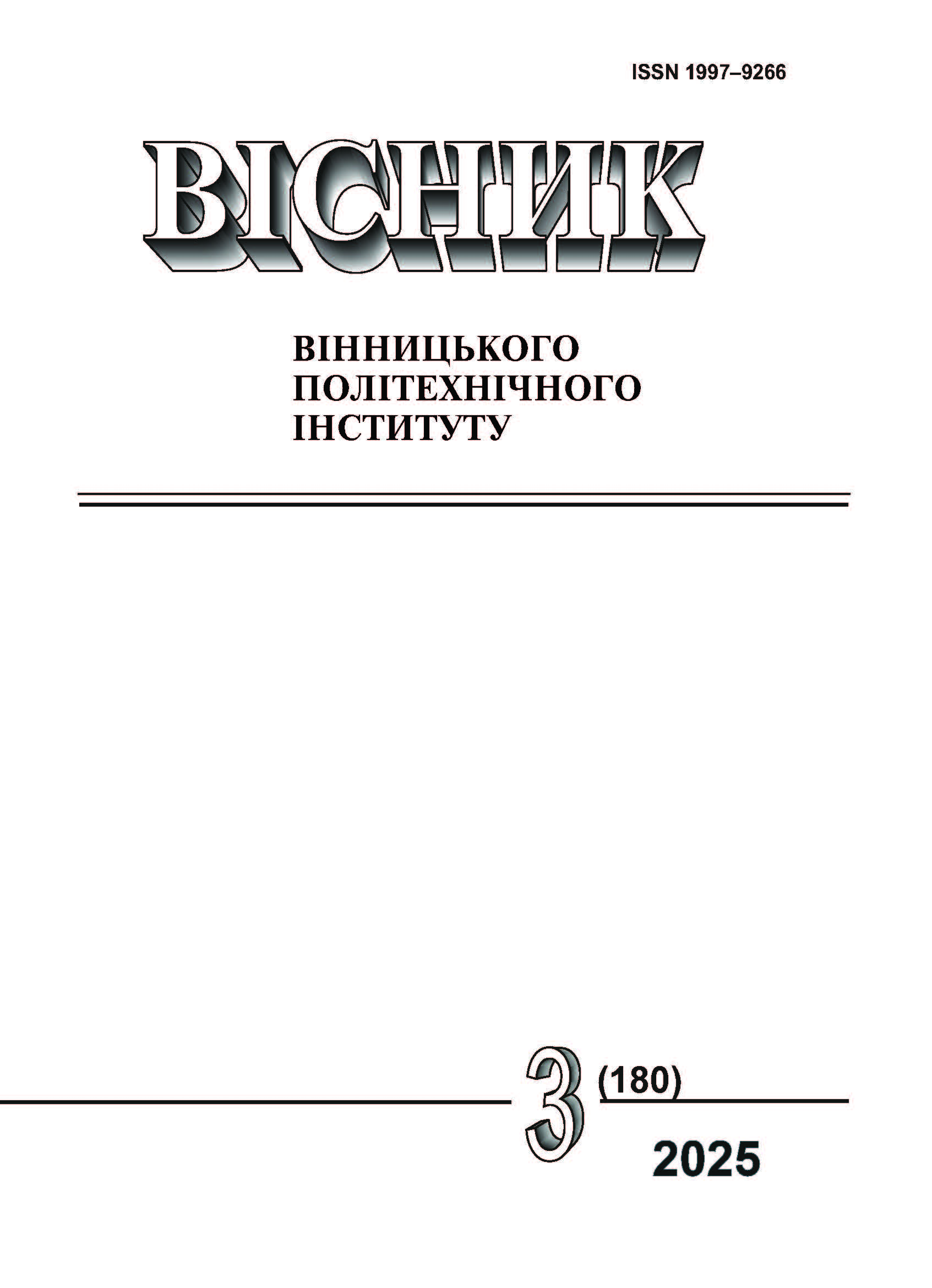Method of Determination of Voltage Dip Source Location in Relation to the Border of Balance Responsibility
DOI:
https://doi.org/10.31649/1997-9266-2025-180-3-72-78Keywords:
symmetrical voltage components, polar coordinates, types of voltage dips, total negative-sequence impedanceAbstract
The uncertainty of voltage dips source location on the border of balance responsibility complicates the timely response of maintenance personnel to faults in the electrical network and also leads to frequent legal disputes between electricity consumers and suppliers. The determination of the fault direction—towards the consumer or the electricity supplier—is carried out by analyzing the negative-sequence voltage on the power line and the negative-sequence current flowing through that line, followed by comparing their relative phase angles. It is important to note that the angular characteristics of voltage dips within an internal network (e.g., within a facility) may significantly differ from those in external networks due to the heterogeneity of networks with different nominal voltage levels. This can affect the angular characteristics and lead to substantial errors. Research also shows that determining torque for the conventional negative-sequence directional element has several limitations: the negative-sequence voltage is inversely proportional to the source power; the fault impedance reduces the level of the negative-sequence current; and the values of the traditional directional torque directly depend on the magnitude of the negative-sequence voltage and current, which limits the ability to accurately determine the fault direction. This work presents the method for identifying the location of a voltage dip relative to the boundary of balance responsibility in a three-phase electrical network by developing a directional element based on the total negative-sequence impedance. In this approach, the total negative-sequence impedance is always negative for forward faults and always positive for reverse faults. The effectiveness of this method for fault direction detection was verified through simulation of a type B voltage dip. The results of the simulation demonstrated acceptable accuracy.
References
О. Г. Гриб, Г. А. Сендерович, П. Г. Щербакова, і Х. Яров, Автоматичне визначення положення джерела провалу напруги.[Електронний ресурс]. Режим доступу: https://repository.kpi.kharkov.ua/server/api/core/bitstreams/3bf42e02-76e1-4599-9d65-dfa0c58559de/content .
Д. Чен, і Р. Іравані, «Аналіз визначення джерела провалу напруги на основі синхронізованого вимірювання фазорів,» Транзакції IEEE з постачання електроенергії, т. 21, № 1, с. 233-240, 2006. https://doi.org/10.1109/TPWRD.2005.852356 .
M. Боллен, Розуміння проблем якості електроенергії: провали напруги та перерви. Нью-Йорк: IEEE Press, 2000, 543 с. ISBN: 978-0780347131.
M. Боллен, і П. Рібейро, «Визначення походження провалів напруги та короткочасних перерв,» Матеріали Зимової конференції IEEE з електроенергетики, 2001, т. 2, с. 1123-1128. https://doi.org/10.1109/PESW.2001.917233 .
IEC 61000-4-30:2015. Electromagnetic compatibility (EMC), Part 4-30: Testing and measurement techniques – Power quality measurement methods, International Electrotechnical Commission, 2015, 140 p.
“Modified methods for voltage sag source detection using transient characteristics,” Electric Power Systems Research, 2022. https://doi.org/10.1016/j.epsr.2022.107087 .
“Detection and classification of voltage sags in real-time for power quality monitoring,” Measurement, 2020. https://doi.org/10.1016/j.measurement.2020.108046 .
Вейзага M., Делфа Ц., Діалло Д., Берсу С., і Бертін Л. «Методика ідентифікації джерел провалів напруги на основі симетричних складових та динамічного вирівнювання часових рядів,» IET Генерація, передача та розподіл, 2023. https://doi.org/10.1049/gtd2.12765 .
Bill Fleming, “Negative-Sequence Impedance Directional Element,” 10th Annual ProTest User Group Meeting Pasadena, California February 24–26, 1998. https://selinc.com/api/download/2475?id=2475 .
Y. Yalman, та ін. «Реалізація алгоритму визначення відносного розташування провалу напруги та типу несправності з використанням даних реального часу,» Mathematics, т. 10, № 19, 2022. https://doi.org/10.3390/math10193537 .
Karl Zimmerman, David Costello, “Fundamentals and Improvement for Directional Relays,” 63rd Annual Conference for Protective Relay Engineers, 2010. https://doi.org/10.1109/CPRE.2010.5469483 .
Ryan McDaniel and Michael Thompson, “Impedance-Based Directional Elements – Why Have a Threshold Setting? ” 75th Annual Georgia Tech Protective Relaying Conference Atlanta, Georgia May 4–6, 2022, pp. 1-18. https://selinc.com/api/download/135483/ .
Joe Mooney, P. E. Jackie Peer, Application Guidelines for Ground Fault Protection. [Electronic resource]. Available: https://cdn.selinc.com/assets/Literature/Publications/Technical%20Papers/6065_ApplicationGuidelines_Web.pdf .
Karl Zimmerman, and Joe Mooney, “Comparing Ground Directional Element Performance Using Field Data,” 20th Annual Western Protective Relay Conference, Spokane, Washington, October 19-21, 1993.
Downloads
-
pdf (Українська)
Downloads: 49
Published
How to Cite
Issue
Section
License

This work is licensed under a Creative Commons Attribution 4.0 International License.
Authors who publish with this journal agree to the following terms:
- Authors retain copyright and grant the journal right of first publication.
- Authors are able to enter into separate, additional contractual arrangements for the non-exclusive distribution of the journal's published version of the work (e.g., post it to an institutional repository or publish it in a book), with an acknowledgment of its initial publication in this journal.
- Authors are permitted and encouraged to post their work online (e.g., in institutional repositories or on their website) prior to and during the submission process, as it can lead to productive exchanges, as well as earlier and greater citation of published work (See The Effect of Open Access).





